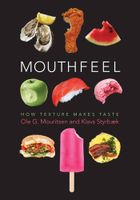Advertisement
Frozen Desserts
From Granular and Creamy to Chewy
Appears in
By Ole Mouritsen and Klavs Styrbæk
Published 2017
A sublime synergy between taste, mouthfeel, and temperature is the hallmark of a good frozen dessert. Textures run the gamut from the crunchiness of a granita and the graininess of a sorbet to the creaminess of homemade ice cream and the ultrasmoothness of a gelato. All frozen desserts are a complex mixture of ice crystals, air bubbles, and a sugar solution that does not freeze. Their microscopic structures are what ultimately determine their various sensory qualities.
Frozen desserts are usually made with ordinary sugar and other sweeteners—for example, glucose and inverted sugar. The sugar content has an overarching influence on how soft an ice cream feels and, hence, on its basic texture. Normally, a frozen dessert has a sugar content of at least 15 percent, and very sweet desserts, of course, contain much more.

